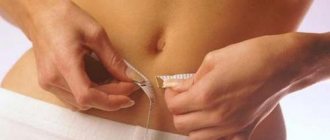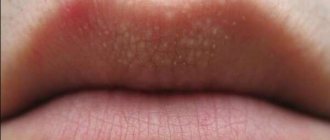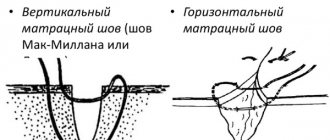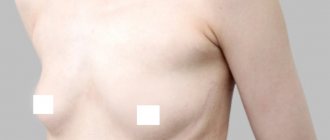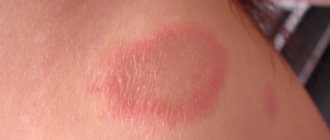Seroma of postoperative scar
Doctors often have to perform urgent and complex operations. Many of them literally save a person’s life. Sometimes it happens that after surgery complications arise in the suture area. After mechanical dissection of the skin, lymph sometimes accumulates in places where scars form. Between the suppression of capillaries and the fatty layer there is a large accumulation of serous fluid. When its volume increases greatly, the fluid begins to seep through the scar tissue, if it is not very dense.
This physiological phenomenon causes a lot of discomfort. The consistency of the liquid can be viscous or liquid. Usually its color is straw-yellow, sometimes gray with bloody streaks. It has no smell. The disease occurs with large swelling in the suture area, often with painful sensations.
Seroma often appears after plastic surgery. Most of these complications go away on their own within a couple of weeks. However, after problems with a large amount of fluid, the skin begins to sag a lot. All these moments cause discomfort and anxiety. As a result of such complications, the patient is forced to visit the doctor more than once and spend a long time recovering.
Such complications do not cause severe pain. Sometimes pain is felt if there is too much fluid. It is quite difficult to immediately recognize such a complication.
Postoperative recommendations
The postoperative period after laparoscopy in a hospital setting lasts from 3 to 6 days, depending on the complexity of the operation performed. Subsequently, the patient is sent for outpatient treatment. Rehabilitation after laparoscopic surgery, as a rule, takes place in an accelerated manner. The sutures, depending on the surgical material used, are removed within 7–10 days, or they dissolve in the body on their own.
After a month, performance is completely restored. It is the patient’s responsibility to follow all recommendations regarding adherence to the regimen and diet. For a month, the operated person should not resort to heavy physical activity. Do not do strength exercises or lift weights. Nevertheless, rational physical activity is indicated from the second day after surgery to avoid the development of adhesions.
One of the most important factors is proper nutrition during the postoperative period. In the first days, the diet should consist of weak broths and oatmeal jelly. While on outpatient treatment, the patient should adhere to a light diet. The diet is based on the consumption of the following products:
- pureed soups;
- river and sea fish containing less than 8% fat;
- turkey meat, chicken;
- white omelet and soft-boiled eggs.
- low-fat cottage cheese, unsalted cheese;
- porridge, pasta;
- potato, fruit and berry puree.
It is necessary to eliminate from the diet:
- fat meat;
- mayonnaise-based fatty sauces;
- dishes made from lentils, peas, beans;
- pastries from butter dough;
- spicy and smoked products.
The consumption of alcoholic beverages is strictly prohibited. Rough food can cause difficulty and pain when processed by the digestive tract. Obstipation (constipation) negatively affects the well-being and condition of postoperative sutures. If these symptoms occur, laxatives or an enema are recommended.
In addition to the shortened recovery period, the prerogatives of laparoscopy before abdominal surgery are considered to be: a minuscule likelihood of the formation of adhesions (provided the patient follows the doctor’s recommendations), the aesthetic appearance of the scars (in less than a year, the consequences of the operation are no longer noticeable). In the absence of contraindications, laparoscopic surgery is preferable.
Any surgical intervention is a big test for the patient’s body. This is due to the fact that all his organs and systems experience increased stress, no matter whether the operation is small or large. It especially affects the skin, blood and lymphatic vessels, and if the operation is performed under anesthesia, then the heart. Sometimes, after everything seems to be over, a person is diagnosed with “seroma of the postoperative suture.” Most patients do not know what it is, so many are frightened by unfamiliar terms. In fact, seroma is not as dangerous as, for example, sepsis, although it also does not bring anything good with it. Let's look at how it happens, why it is dangerous and how it should be treated.
Main reasons
After the operation, various factors are noted that cause fluid to form. The main reason is a large wound surface and detachment of large surfaces of subcutaneous tissue. The wound surface is associated with damage to a large number of lymph vessels. They are not able to thrombose like blood vessels. This leads to the accumulation of serous fluid , which is lymph. Bloody discharge gives it a red color.
There are also other reasons that cause similar complications after surgery. These include:
- Traumatic work with tissues - during the operation, the surgeon must work gently with tissues. The cuts must be made carefully in one movement. Numerous incisions result in a large area of damaged tissue, which creates the risk of seroma formation.
- Inflammatory process - much in the postoperative period depends on the skin and the body. Sometimes the process of prolongation occurs with developing infectious inflammation. As a result, excess lymph fluid is formed.
- Excess weight - very often people with excess fat experience poor wound healing. This situation is observed in 75% of patients in this group.
- Tissue burn - in this case, necrosis occurs and an inflammatory fluid is formed. Coagulation during surgery must be applied with extreme precision.
- Diabetes mellitus - with this diagnosis, the concentration of glucose in the blood increases. It creates obstacles to the normal restoration of damaged tissues.
- Dense subcutaneous fat layer - if the thickness of the layer exceeds 5 cm, then you need to be prepared for the appearance of seroma. To avoid complications, it is necessary to undergo liposuction before surgery.
- Age - in elderly patients, all metabolic processes occur more slowly. As a result, new cells are not formed as quickly.
- Hypertension - lymph under high pressure in the body is distributed unevenly.
Complications
Postoperative suture seroma does not always go away on its own and not in everyone. In many cases, without a course of therapy, it can fester. This complication can be provoked by chronic diseases (for example, tonsillitis or sinusitis), in which pathogenic microorganisms penetrate through the lymph vessels into the cavity formed after surgery. And the liquid that collects there is an ideal substrate for their reproduction.
Another unpleasant consequence of seroma, which was not paid attention to, is that the subcutaneous fatty tissue does not fuse with the muscle tissue, that is, the cavity is constantly present. This leads to abnormal skin mobility and tissue deformation. In such cases, repeated surgery must be used.
Symptoms and diagnosis
With this complication there is almost no pain . For this reason, seroma may remain unrecognized for a long time. However, the following symptoms are observed:
- sensation of fluid transfusion in the suture area on the abdomen;
- due to edema, there may be swelling in the lower abdomen, sometimes such swelling increases and then decreases again;
- tension or tenderness in the area where lymphatic fluid accumulates;
- in a standing position, unpleasant pulling sensations may intensify;
- in the area of the largest accumulations of lymph, redness of the skin is noticeable;
- increase in body temperature to 37−37.5 and fatigue, weakness.
Seroma is diagnosed in two ways: using instruments and examination. With the latter method, the surgeon examines the patient by palpation. It immediately becomes noticeable how the liquid flows from one part to another.
The second method is ultrasound , with which the accumulated fluid is clearly visible. It collects between the fatty tissue and the anterior abdominal wall.
Treatment options
Treatment of such a complication is usually carried out in two ways - surgical and medicinal, it is more conservative. Let's consider both treatment options.
With the surgical method, a puncture is performed to remove serous fluid. In almost 90% of cases, this procedure is enough to completely remove the fluid. The surgeon performs the procedure using a syringe . The volume of pumped out liquid can vary, from 25 ml to 600 ml. It is recommended to pump out every 2-3 days to completely get rid of the problem. Usually 3-7 punctures are enough until complete elimination. If the situation is more complex, then a larger number of punctures may be needed - up to 10-15 or more. Almost always, after such manipulations, the amount of serous fluid decreases and then disappears completely.
In patients with thick fat layers, sometimes this procedure is useless and does not help solve the problem. Their seroma reaches large sizes. To do this, it is necessary to use drainage with active aspiration . With the help of drainage, the fluid constantly drains away. Gradually it becomes less and less, as a result of which the cavity closes. Everything grows together and the seroma disappears. In this case, it is also necessary to carry out drug treatment.
Preventive measures and drug treatment
Prevention is based on compliance with all the rules and principles of surgery. You should definitely wear knitted compression underwear during the postoperative period for 2 months. It can also be a bandage or an elastic bandage. In the first two weeks after surgery, the patient should refrain from any physical activity. They greatly increase the risk of developing complications.
Prevention
On the part of the medical staff, preventive measures consist of strict adherence to the surgical rules of the operation. Doctors try to perform electrocoagulation more gently and injure less tissue.
On the part of patients, preventive measures should be as follows:
- Do not agree to surgery (unless there is an urgent need) until the thickness of the subcutaneous fat reaches 50 mm or more. This means that you first need to do liposuction, and after 3 months, surgery.
- After surgery, wear high-quality compression stockings.
- Avoid physical activity for at least 3 weeks after surgery.
Surgeon of the highest qualification category. Work experience in planned and emergency surgery for 26 years.
He graduated from the Kuibyshev Medical Institute in 1990 with a degree in general medicine. Internship in surgery at Regional Hospital No. 1 of Ulyanovsk.
He underwent repeated advanced training and advanced training at the bases of Ulyanovsk State University, Penza, N-Novgorod on the topics: “Current issues of emergency surgery of the thoracic and abdominal organs,” also in St. Petersburg on “Endovideosurgery of the abdominal organs and retroperitoneal space.”
Performs various types of planned and emergency surgical interventions, operations for purulent processes.
During my work, I mastered various surgical techniques:
- removal of benign tumors of the skin and subcutaneous tissue (atheroma, lipoma, fibroma, etc.) of various locations;
- opening of abscesses, phlegmons, felons, necrectomy of various localizations, including amputation and disarticulation of both fingers and limbs (upper and lower), for example. for diabetic or atherosclerotic gangrene;
- various types of hernia repairs for inguinal, femoral, umbilical, postoperative hernias, both tension and non-tension types of plastic surgery;
- gastric resection according to B-1, B-2 with various types of anastomoses;
- cholecystectomy (laparotomy) with various types of both external and internal (IDA) drainage of the common bile duct;
- little experience in laparoscopic operations, mainly assisting with cholecystectomies and appendectomies;
- appendectomy;
- suturing of perforated ulcers of the stomach and duodenum;
- splenectomy;
- resection of the small and large intestines with various types of intestinal anastomoses for various conditions (obstructive and adhesive intestinal obstructions, etc.), hemicolectomy;
- laparotomy for various injuries of internal organs (suturing wounds of the liver, wounds of the intestine, mesentery, pancreas, etc.);
- other types of emergency interventions on the abdominal organs.




